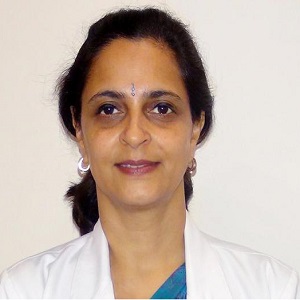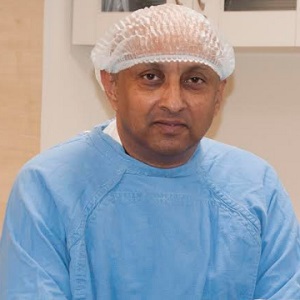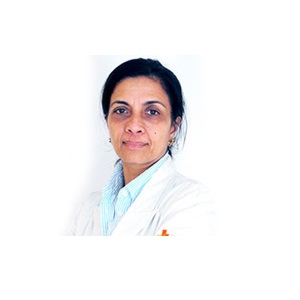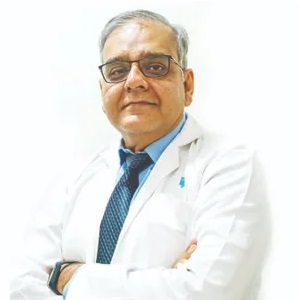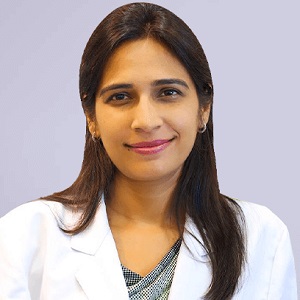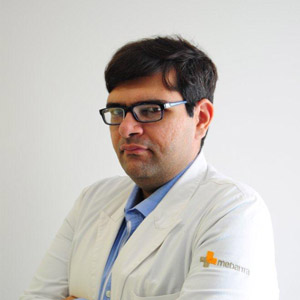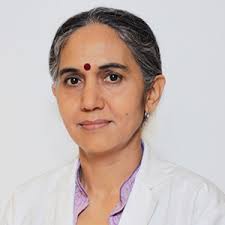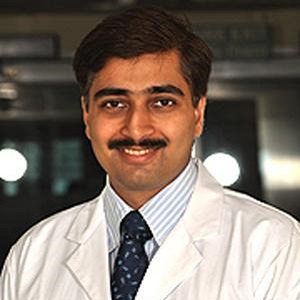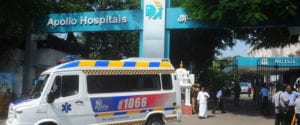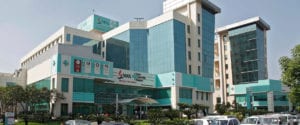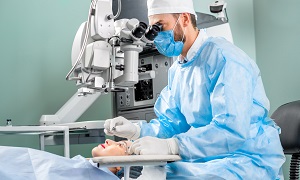Best Doctors in India for Glaucoma treatment
- Ophthalmologist, Eye Surgeon, Gurugram, India
- Over 22 years’ experience
Profile Highlights:
- Dr. Anita Sethi’s proficiency lies in LASIK Surgery, Phaco Eye Surgery, Refractive Surgery, Ptosis & other Oculoplastic Surgery, Cornea treatment, and Cataract treatment.
- She has a special interest in Orbital & Oculoplastic surgery and has worked extensively with trauma and Acid burn victim. She is known to be among the best ophthalmologists in India.
- Ophthalmologist, Eye Surgeon, Gurugram, India
- Over 36 years’ experience
Profile Highlights:
- Dr. Sudipto Pakrasi is an immensely talented and extremely popular Eye Surgeon, famous for operating on most celebrities in India. Known to be one of the finest Ophthalmic Surgeons in the country, Dr. Sudipto Pakrasi has also been a pioneer in innovations as well as the Art of Cataract surgery over the past 36 years.
- He is known especially for his insightful medical treatment approach for cataract surgeries and glaucoma.
- Ophthalmologist, Eye Surgeon, Gurugram, India
- Over 18 years’ experience
Profile Highlights:
- Dr. Neeraj Sanduja is a well-trained Ophthalmologist, with huge experience in the management of vitreoretinal conditions.
- He is known to perform around 60 FFA and 75 Lasers treatments in OPD in a month. He is actively involved in ROP screening and treatment awareness programs.
- His previous experience includes a stint at William Beaumont Hospital, Michigan, the USA as a Visiting Fellow in Paediatric Retina.
- Eye Surgeon, Ophthalmologist, New Delhi, India
- Over 24 years’ experience
Profile Highlights:
- Dr. Parul Sharma is a renowned ophthalmologist and eye surgeon with a track record of outstanding performance throughout her career in academics, diagnostics, and surgery.
- She is known to keep an active interest in the latest developments of most subspecialties in ophthalmology including academics. Dr. Parul Sharma also gained experience from prestigious national and international eye institutes.
- Ophthalmologist, Gurugram, India
- Over 35 years’ experience
Profile Highlights:
- Dr. Careen Pakrasi is one of the best ophthalmologists in Gurugram. She practiced as a senior resident in Safdarjung Hospital from 1994 to 1996. Dr. Carreen Pakrasi is also a post-graduate Diploma holder in hospital management from IHFW.
- Dr. Careen Pakrasi has over three decades of rich professional experience in her field. Her area of interest lies in the treatment of Cataracts, Refractive Surgery, Glaucoma, and UVEA. She used to be the director of Pakrasi eye associates from 1996 to 2013.
- Ophthalmologist, New Delhi, India
- Over 32 years’ experience
Profile Highlights:
- Dr. Aniel Malhotra is a renowned eye surgeon in Delhi and has experience of nearly 32 years in the field.
- Since 1996 he has been working as a Senior Consultant at Indraprastha Apollo Hospital, New Delhi.
- Dr. Malhotra specializes in squint surgery, LASIK Surgery, and cataract surgery. Besides these, some significant services offered by the doctor are Cornea transplant, retinal detachment surgery, Diabetic Retinopathy, DALK, DSEK, and Cosmetic Eye Surgery.
- He got a fellowship under Padma Shree Dr. S.S. Badrinath from renowned eye hospital, Shankar Netralaya, Chennai.
- Ophthalmologist & Eye Surgeon, Gurugram, India
- Over 20 years’ experience
Profile Highlights:
- Dr. Shibal Bhartiya is an eye surgeon, who specializes in glaucoma and ocular surface diseases.
- Dr. Bhartiya is the Executive Editor of ‘Current Glaucoma Practice’, which is the official journal of the International Society of Glaucoma Surgery. She is also the Editor in Chief of Clinical and Experimental Vision and Eye Research. She is the founder-director of Medequill, a language editing service that also provides web content for medical services. Dr. Bhartiya has more than ten textbooks on glaucoma and ophthalmology to her credit.
- Ophthalmologist, Gurugram, India
- Over 12 years’ experience
Profile Highlights:
- Dr. Indrish Bhatia is a well-known ophthalmologist with a rich experience of 12 years across a host of leading medical institutions under his belt and currently works at FMRI as a Senior Consultant.
- Throughout his career, he has performed over 1000 vitreoretinal surgeries. He has also given over 6000 intravitreal injections. He also has a special interest in diabetic retinopathy.
- Eye Surgeon, Ophthalmologist, New Delhi, India
- Over 20 years’ experience
Profile Highlights:
- Dr. Amanjot Singh has been practicing medicine for 20 years. Her specialization lies in cataract surgery by phacoemulsification and LASIK. She has been conducting training in Phacoemulsification at SGHS hospital in Sohana and at Centre for Sight, New Delhi prior to joining Max Healthcare.
- She has multiple specializations including refractive surgery, corneal surgery, eye muscle surgery, oculoplastic surgery, etc. Dr. Amanjot is a member of the Delhi Ophthalmic Society and the Bombay Ophthalmic Society.
- Eye Surgeon, Ophthalmologist, Gurugram, India
- Over 15 years’ experience
Profile Highlights:
- Dr. Sameer Kaushal is a qualified eye surgeon who spent a few years in the Cornea, Cataract, and Refractive Surgery Unit of AIIMS gaining expertise in the treatment of eye diseases, especially corneal disorders.
- Dr. Kaushal also gained valuable experience in performing various eye surgeries, especially anterior segment surgeries including phaco surgery for cataracts, LASIK, and corneal transplantation. His expertise extends to the latest treatment modalities which include sutureless corneal transplants and artificial corneas.
- Throughout his career, Dr. Sameer Kaushal has also been involved in teaching as well as research activities.
Best Hospitals in India for Glaucoma treatment
Indraprastha Apollo Hospital, New Delhi
- City: New Delhi, India
Hospital Highlights:
- Indraprastha Apollo Hospital is a 700-bedded multispecialty hospital in the heart of the capital of India. It is a part of Apollo Hospital group, one of India’s most reputed healthcare chains. Indraprastha Apollo Hospital has been accredited by Joint Commission International, making it the first internationally accredited hospital in the country in 2005.
- There are 52 specialties in the hospital with one of the best cardiology centers in the country. The hospital is also equipped with State of the art infrastructure facilities with the largest Sleep Lab in Asia and the largest number of ICU bed facilities in India.
- The hospital also has one of the largest dialysis units in India along with a dedicated Bone Marrow Transplant unit.
- The latest and highly advanced technologies that are installed in the hospital include Da Vinci Robotic Surgery System, PET-MR, PET-CT, Cobalt-based HDR Brachytherapy, Brain Lab Navigation System, Tilting MRI, Portable CT scanner, 3 Tesla MRI, 128 Slice CT scanner, DSA Lab, Endosonography, Hyperbaric Chamber and Fibro scan.
Fortis Memorial Research Institute, Gurugram
- City: Gurugram, India
Hospital Highlights:
- Fortis Memorial Research Institute is a multi-super-specialty, quaternary care hospital with 1000 beds. The hospital comprises reputed clinicians, and international faculty and is also equipped with cutting-edge technology. The hospital is a part of Fortis Healthcare Limited, a reputed chain of private hospitals in India.
- It is a NABH-accredited hospital that is spread across 11 acres of land and has a capacity of 1000 beds. The hospital has 55 specialties and is one of the premier health care centers in the Asia Pacific region popularly known as “the Mecca of Healthcare”.
- The hospital has 260 diagnostic centers and is also equipped with the latest and advanced techniques that include 3 Telsa which is the world’s first Digital MRI technology. The hospital also has world-class Radiation Therapy techniques which have been developed by leading technology experts from Elekta and Brain Lab.
Apollo Hospital, Chennai
- City: Chennai, India
Hospital Highlights:
- Apollo Hospitals, Chennai, is one of the best hospitals for heart care in India. Over the years, Apollo has expanded all over India, as a healthcare chain.
- India’s first ‘Only Pancreas’ transplant was performed in Apollo Hospital. The hospital is known for successfully performing Asia’s first en-bloc combined heart and liver transplant, and over the years, it has attained a remarkable achievement in the global healthcare space. Around 3-4 organ transplants are performed in the hospital per day.
- Equipped with over 500 beds, this hospital in Chennai was established in 1983 and since then has been among the most preferred hospital for patients from all over the world.
- The hospital holds accreditation of the NABH and JCI and is the first hospital in India to be ISO 9001 and ISO 14001 certified. It is also the first South Indian Hospital to receive subsequent reaccreditation from the JCI USA 4 times.
Medanta-The Medicity, Gurgaon
- City: Gurugram, India
Hospital Highlights:
- One of India’s best and largest multi-specialty hospitals, Medanta was built with the aim to bring India to the highest standards of medical care. The hospital has been providing the best medical services to its patients, since its inception, with care, commitment, and compassion.
- Equipped with 1250 beds, the hospital was founded by Dr. Naresh Trehan in the year 2009 with an aim to provide the best medical care at affordable costs. The hospital is spread across 43 acres and includes 45 operation theatres and 350 beds dedicated solely to ICU. The hospital includes over 800 doctors, and more than 22 specialty departments and has a dedicated floor for individual specialty in order to offer the best services under one roof.
- The hospital is considered one of the premier institutes in India for Cardiac Care and includes staffs and members of high caliber. The hospital has 6 distinct centers of excellence.
Max Super Specialty Hospital, New Delhi
- City: New Delhi, India
Hospital Highlights:
- One of the well-regarded providers in India committed to the highest standards of clinical excellence and patient care, Max Super Specialty Hospital is a part of Max Healthcare, which is the second-largest healthcare chain in India. Regarded as one of the most well-regarded healthcare providers in the country, Max Super Specialty Hospital is committed to the highest standards of clinical excellence as well as patient care. The hospital is also equipped with the latest technology as well as cutting-edge research. The hospital is known to deliver and ensure the highest level of patient care.
- The hospital has more than 500 beds and offers treatment for over 35 specialties. The hospital also holds the credit of having installed the first Brain Suite in Asia. This is a highly advanced Neurosurgical machine that allows MRI to be taken while surgery is ongoing.
- Other advanced and latest technologies are also installed in the hospital such as the 1.5 Tesla MRI machine, 64 Slice CT Angiography, 4D ECHO, LINAC, and 3.5T MRI machine.
Artemis Hospital, Gurugram
- City: Gurugram, India
Hospital Highlights:
- One of the most well-known hospitals in the Delhi NCR, Artemis Hospital is the first hospital in Gurugram to get accredited by the Joint Commission International.
- With more than 40 specialties, the hospital has been designed to be one of the most technically advanced hospitals in the country, with the best medical and surgical health care. The hospital has eleven special and dedicated centers, for Heart, Cancer, Neurosciences, etc.
- The latest technologies in the hospital include Endovascular Hybrid Operating Suite and Flat panel Cath Labs for the cardiovascular department, 3 Tesla MRI, 16 slice PET CT, 64 Slice Cardiac CT Scan, HDR Brachytherapy, and highly advanced Image Guided Radiation Therapy techniques (LINAC) are installed in the hospital.
- The hospital has won several awards as well, since its inception.
Gleneagles Global Hospitals, Chennai
- City: Chennai, India
Hospital Highlights:
- Established in 1999, Gleneagles Global Hospital, Chennai, is one of the top healthcare facilities in Southern India. It is part of the Gleneagles Hospital Chain, which is the fourth largest healthcare chain in the country. The hospital specializes in multi-organ transplants of kidneys, liver, lungs, heart, etc.
- The hospital has an excellent infrastructure and state-of-the-art lab and equipment set-up. The hospital boasts cutting-edge technologies, a highly skilled team of doctors and surgeons, and trained support staff. Located in Perumbakam, Chennai, it is one of India’s premier health care destinations. The hospital has performed some of the most complex surgical and clinical procedures in India including multi-organ transplantations.
- The hospital’s lung transplantation program is one of the best in the country. The hospital is known for having performed India’s first single lung transplant and first minimal invasive lung transplant. It is also the only Indian hospital to be associated with King’s College Hospital, London, United Kingdom for liver transplantations.
Fortis Hospital, Mulund, Mumbai
- City: Mumbai, India
Hospital Highlights:
- Fortis Hospital in Mulund is a 315-bed multi-speciality tertiary care hospital with five JCI accreditations that offers a wide variety of diagnostic and therapeutic services. The Fortis Hospital in Mulund delivers patient-centred treatment with cutting-edge technology, highly skilled and experienced surgeons, and paramedical staff.
- This institution houses Maharashtra’s largest multi-organ transplant centre. It is also the first heart transplant centre in western India to conduct 100 or more consecutive heart transplants in under four years. It is the only hospital in the city to have multi-organ transplants and has handled the youngest patient for angioplasty. Fortis Hospital Mulund now boasts the first advanced surgical robot in central Mumbai.
- Cardiology and heart surgery, urology, nephrology, neurosciences, orthopaedics, digestive care, emergency and critical care, and maternity care are among the services provided by the hospital.
Kokilaben Dhirubhai Ambani Hospital, Mumbai
- City: Mumbai, India
Hospital Highlights:
- Kokilaben Dhirubhai Ambani Hospital, Named after the wife of Indian industrialist Dhirubhai Ambani, the founder of Reliance Industries, this is one of the top hospitals in Mumbai. This 750-bed multi-specialty hospital became operational in 2009. Known as one of India’s most advanced tertiary care facilities, the hospital is designed to raise India’s global standing as a healthcare hub, with an emphasis on excellence in clinical services.
- Kokilaben Dhirubhai Ambani Hospital uses Protocol and Care Pathway based treatment models to ensure the best outcomes for patients.
- The hospital represents a confluence of top-notch talent, cutting-edge technology, state-of-the-art infrastructure, and, most importantly commitment.
- The hospital also holds the accreditation of the NABH, NABL, CAP, and JCI.
- The hospital has been recognized as the No. 1 Multispecialty Hospital in Mumbai and the West Zone for the fifth year in a row in 2020 by The Week.
Fortis Escorts Hospital, New Delhi
- City: New Delhi, India
Hospital Highlights:
- Over the last 33 years, the Fortis Escorts Heart Institute has set new standards in cardiac treatment with groundbreaking research. It is now known around the world as a centre of expertise for Cardiac Bypass Surgery, Interventional Cardiology, Non-invasive Cardiology, Paediatric Cardiology, and Paediatric Cardiac Surgery.
- The hospital has cutting-edge laboratories that perform a wide range of diagnostic tests in Nuclear Medicine, Radiology, Biochemistry, Haematology, Transfusion Medicine, and Microbiology.
- Fortis Escorts Heart Institute boasts a diverse group of bright and experienced doctors who are backed up by a team of highly qualified, experienced, and devoted support professionals as well as cutting-edge equipment such as the recently installed Dual CT Scan.
- Approximately 200 cardiac doctors and 1600 personnel currently collaborate to manage over 14,500 admissions and 7,200 emergency situations each year. The hospital now has a 310-bed infrastructure, as well as five cath labs and a slew of other world-class amenities.
What is Glaucoma?
The optic nerve needs to be in a proper condition for good vision and Glaucoma is a serious condition that directly affects and damages the same. The most common cause of such damage is excessive pressure on the eyes. According to several pieces of research, Glaucoma is presently one of the leading causes that result in blindness, especially in older adults above 60 years of age.
The biggest problem with Glaucoma is that it often develops silently and you won’t be able to take proper precautions. The fact that the effect is gradual means you will only be able to realize the problem when it has already developed to an advanced stage. Since glaucoma causes an irreparable loss of vision, it is better to be careful while you still can.
The best way is to get regular check-ups done. Every visit to the Ophthalmologist must include thorough eye pressure measurements. As a result, diagnosis becomes easier from the early stages if there seems to be a problem. The silver lining to the entire story is that if Glaucoma can be detected at the initial stage, severe effects such as vision loss can be prevented or at least delayed. A person can completely get rid of the problem through proper procedures and surgeries.
What are the types of Glaucoma?
- Open-angle Glaucoma
- Angle-closure Glaucoma
- Normal-tension Glaucoma
- Congenital Glaucoma
- Pigmentary Glaucoma
An in-depth look into Glaucoma symptoms
There are several stages of Glaucoma that are often used as alternative names for the disease too. Before getting into the symptoms, you must get an idea of the fact that they differ based on the stage and type of Glaucoma that is detected in your case. The severity of symptoms also varies depending on similar conditions. In this section, we will learn about Glaucoma symptoms based on their stage and type. So, let’s begin-
Open-angle Glaucoma
- Blinding and patchy spots in the central or peripheral vision that may appear in both eyes at frequent intervals
- Tunnel vision (during the advanced stage)
Narrow-angle or Acute-Closed Glaucoma
This type is often very painful and sometimes reported as the worst version of Glaucoma. If someone is experiencing any of the below-mentioned, you should take the person immediately to an ophthalmologist for emergency treatment. If you ignore the conditions even for a day, it might lead to severe conditions and even permanent vision loss.
The following are the symptoms-
- Painful throbbing in the eyes
- Vomiting and nausea
- Eye redness
- Dilated pupil
- Headaches (can happen on just one side of the head as that of the affected eye)
- Visions of light rings or halos
- Foggy or blurry vision
Congenital Glaucoma
The term ‘congenital’ makes it clear already that the below-mentioned Glaucoma symptoms are associated with infants and children during their very early years.
- Tearing, eyelid spasms and light-sensitivity
- A habit of rubbing the eyes, keeping eyes closed for the maximum part of the day and squinting
- Larger than the normal cornea and a visible cloudy layer in that part
Secondary and other types of Glaucoma
The secondary or other types of Glaucoma symptoms depend on the causes of eye pressure. It can be anything that leads to weird visions such as halos and light rings. The following are a few common symptoms of secondary Glaucoma.
- Inflammation (also known as uveitis)
- Photophobia or light-sensitivity
- Eye injuries such as corneal edema, retinal detachment, and bleeding
Glaucoma causes
As mentioned earlier, Glaucoma is a major effect of excessive eye-pressure which eventually causes damage in the optical nerve. As a result, there is a development of blinding spots that occur in your visual field. The most common reason for eye-pressure to increase is excessive fluid build-up in the eyes also known as ‘aqueous humor’. This fluid does not flow down in the form of tears but spreads inside the eye.
It is normal if there is a limited fluid build-up that will eventually flow down through the trabecular tissue at the intersection point of the cornea and iris. However, when there is the excess fluid build-up that does not drain out properly, it becomes a problem and triggers the rise of pressure in your eyes. In some cases, Glaucoma causes also include a family history of the disease.
Basic risk factors
While you must have the basic knowledge about the major symptoms and signs of Glaucoma, it is also important to know that the chronic version of the disease may develop without such signs. So, it is also important that you are aware of the risk factors. They are:
- High intraocular or internal pressure in the eyes
- Using eye drops for a long time
- Age over 60 years
- History of eye surgery or injury
- Being black, Hispanic or Asian
- Genetic history of Glaucoma
- Being extremely farsighted or nearsighted
- Underlying conditions such as diabetes, anemia, high blood pressure and cardiac issues
- Position of the cornea
Diagnosis of Glaucoma
Treatment for Glaucoma
Glaucoma can be treated in the following ways:
Eyedrops
Oral medicines
Surgery
- Laser surgery procedure can slightly increase the flow of the fluid from the eye in open-angle glaucoma or can stop fluid blockage in angle-closure glaucoma. Laser surgery includes:
- Trabeculoplasty involves the opening of the drainage area. A tiny hole is made in the iris which allows the fluid flow more freely.
- Cyclophotocoagulation involves treatment of the middle layer of the eye to reduce fluid production.
- Microsurgery or trabeculectomy. In this procedure, the doctor creates a new channel to drain the fluid which eases eye pressure.
Therapies
So, Glaucoma is a severe condition that requires awareness and immediate attention. You must keep the risks and symptoms in mind and act responsibly by seeking proper treatment for the disease.

